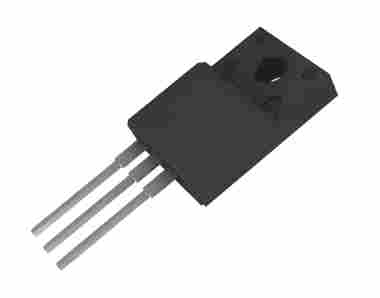Okay, there are many types of rectifier diodes, and choosing the appropriate model is crucial for circuit design. The following is an overview of common rectifier diode models and their characteristics:

1、 Classified by current capacity and universality (most common series)
1N400x series (low-power universal rectifier)
Representative model: 1 N4001 (50V), 1N4002 (100V), 1N4003 (200V), 1N4004 (400V), 1N4005 (600V), 1N4007 (1000V)
Features: This is the most widely used and cost-effective series of general-purpose silicon rectifier diodes. The current capacity is usually 1A (peak surge current can reach 30A). The reverse recovery time is slow (about 2-3 μ s), suitable for 50/60Hz power frequency rectification (such as power adapters, small power supplies).
Packaging: mostly DO-41 (direct insertion).
1N540x series (medium power universal rectifier)
Representative model: 1 N5400 (50V), 1N5401 (100V), 1N5402 (200V), 1N5404 (400V), 1N5406 (600V), 1N5408 (1000V)
Features: Universal silicon rectifier diode, with a current capacity increased to 3A (peak surge current up to 200A). It is also suitable for power frequency rectification, but can handle larger power. The reverse recovery time is also slower.
Packaging: mostly DO-201AD (direct insertion, larger than DO-41).
2、 Classified by speed characteristics (fast recovery/ultra fast recovery diode)
FR (Fast Recovery) series (Fast Recovery Rectification)
Representative model prefixes: FR10x, FR15x, FR20x, UF400x, HER10x, HER20x, etc. (different manufacturers have different prefixes, please refer to the specification sheet).
Characteristic: Significantly reduces reverse recovery time (usually in the range of 50ns to 500ns). Used for secondary rectification, freewheeling diodes, inverters, high-frequency rectification, and other applications that require high switching speeds in switch mode power supplies (SMPS). The range of current and voltage is very wide (from hundreds of mA/tens of V to tens of A/thousands of V).
Packaging: Diverse, including DO-41, DO-201AD, SMA, SMB, SMC, TO-220AC (with heat sink), etc.
For example:
`UF4007 ` (1A, 1000V, Trr ≈ 75ns) - often used as a high-speed substitute for 1N4007.
`FR107` (1A, 1000V, Trr≈500ns)
`HER208` (2A, 1000V, Trr≈75ns)
SF (Super Fast)/UFS (Ultra Fast) series (ultra fast recovery rectification)
Representative model prefixes: SF10x, SF20x, UF10x, ES1x, BYV29x, STTHx, etc.
Characteristics: The reverse recovery time is extremely short (usually less than 50ns, even as low as tens of ns). Used in applications that require very high switching frequencies and minimize switching losses and EMI, such as high-efficiency switching power supplies, PFC circuits, and high-frequency inverters.
Packaging: Same as FR series, diverse.
For example:
`ES1D` (1A, 200V, Trr≈25ns)
`UF1007 ` (1A, 1000V, Trr ≈ 75ns) - Faster than UF4007.
`STTH1R06` (1A, 600V, Trr≈30ns)
3、 Classification of pressure drop characteristics (Schottky barrier diode)
Schottky Barrier Diode (SBD)
Representative model prefixes: 1N581x, SB1x, SS1x, MBRx, SKYx, BAT54x, STPSx, etc.
Features: Utilizing the metal semiconductor junction principle, the forward conduction voltage drop is very low (usually 0.2V-0.4V), much lower than that of ordinary silicon diodes (0.7V) and fast recovery diodes (0.8V-1.2V). There is almost no reverse recovery charge (Trr is extremely short, negligible), the switching speed is extremely fast, and the switching loss is minimal. Disadvantages: High reverse leakage current and low reverse breakdown voltage (usually<200V, with some reaching over 100V).
Application: The preferred choice for low voltage, high current, and high-efficiency rectification, such as secondary output rectification (5V, 3.3V, 12V, etc.), polarity protection, freewheeling diode, battery reverse protection, and high-frequency low voltage rectification in switch mode power supplies (SMPS). Not suitable for high voltage rectification.
Packaging: Extremely diverse, ranging from micro mount (SOD-123, SOD-323, SOT-23) to power type (TO-220AC, TO-247, D2PAK).
For example:
`1N5819 ` (1A, 40V) - Classic low power.
`SS34 '(3A, 40V, SMA) - commonly used patch.
`MBR1045 ` (10A, 45V, TO-220AC) - Medium power.
`STPS40170CG ` (2x20A, 170V, TO-247) - High power dual tube common cathode.
4、 Classified by packaging form
Through Hole package:
DO-41: Low power (such as 1N400x, 1N4148- for signal use).
DO-201AD: Medium power (such as 1N540x).
DO-204AL (R-6): Similar to DO-201AD.
TO-220AC: High power rectifier tube, fast recovery tube, Schottky tube commonly used, with built-in or optional heat sink.
Surface Mount - SMD:
SMA, SMB, SMC: small to medium power universal/fast recovery/Schottky.
SOD-123, SOD-323: Low power general-purpose/Schottky/switching transistor.
SOT-23, SOT-223: Low power general-purpose/Schottky/switching transistor.
D2PAK (TO-263): Medium to high power Schottky, fast recovery transistor.
TO-252 (DPAK): Medium power.
Selection key parameters and logical summary
Maximum reverse repetitive peak voltage: It must be higher than the maximum reverse voltage that may occur across the diode in the circuit, and leave a safety margin.
Average rectified forward current: It must meet the maximum average current requirement during normal operation of the circuit, taking into account temperature rise and heat dissipation conditions.
Forward voltage drop: For low voltage and high current applications (such as 5V/12V power output), Schottky diodes are preferred to reduce losses and heat generation.
Reverse recovery time/reverse recovery charge:
Power frequency rectification (50/60Hz): Ordinary silicon tubes (1N400x, 1N540x) are sufficient.
Switching power supply secondary rectification (tens of kHz): fast recovery diodes (FRxxx, UFxxx).
Switching power supply primary/PFC/high-frequency inverter (above several hundred kHz): ultra fast recovery diode (SFxxx, STTHxxx, ESx) or Schottky diode (at low voltage).
Working frequency: The higher the frequency, the higher the requirement for switch speed.
Packaging and heat dissipation: Choose the appropriate packaging based on the current size and PCB space, and consider heat dissipation design (heat sink, PCB copper foil area) for high currents.
Reverse leakage current: Important for low-power or high-precision applications, Schottky diodes have poor performance in this regard.
Peak surge current: Can it withstand the high current impact during startup or short circuit faults.
Choosing a rectifier diode model is not simply about finding the "best" one, but rather based on specific application scenarios (power frequency/high frequency, voltage high and low, current size), key performance requirements (loss, speed, cost), and physical limitations (space, heat dissipation), in the main categories of general-purpose silicon rectifiers (1N400x, 1N540x), fast recovery/ultra fast recovery diodes (FRxxx, UFxxx, SFxxx, ESx), and Schottky diodes (1N581x, SSxx, MBRxxx), combined with specific voltage and current specifications and packaging requirements. Be sure to consult the official data manual for specific models to obtain accurate parameters and performance curves.
